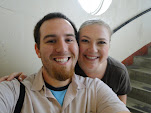Hello. Time for another fun trip to a telescope with Greg, the astronomer!
There are a few older observatories in California that were built back before the cities sprawled. For this observing run I headed to Palomar Observatory in San Diego County. I used the flagship Hale telescope with a 200-inch Pyrex mirror.
A three hour drive into the mountains took me to Mount Palomar and the living quarters known as "The Monastery." The living quarters were given this name because Palomar was built when few women were involved in astronomy, and in fact were banned from visiting the living quarters.

Now women are welcome at Palomar and astronomy is about 50/50, but the name has stuck.
After I settled in my room I went for a walk to the Hale telescope.
I have been to enough telescopes to know that when you are given a master key, you should use it on every door you can. The dome is 14 stories tall with a catwalk at ~80 feet. The lower half is full of closed doors with the remnants of old instruments and observing tools behind them. The most famous of these are the photographic plates which were once used to take astronomical images.
When the 200-inch was first built images were taken on 18-inch square plates of glass that produced negatives that needed to be developed. These plates were placed at "prime-focus." This means that the observer would climb the ladder up the the top of the telescope were a small room and chair are located. Here they would put the plate in place and then look through a small eyepiece at a bright star. They would then sit in the cold and dark dome for an hour nudging the telescope to keep everything aligned. After an hour, they would do it again with a new plate. An assistant would take the first plate down to the basement for developing. These are the rooms that can be explored if you have the master keys they give to the visiting astronomers.
After exploring the telescope I returned to The Monastery, where a cooked dinner was provided. For the next two nights I sat in front of 4 computer monitors and took images using a digital camera. However, I still had to nudge the stars to keep everything aligned while we observed. Since I was the assistant in this case, I am happy that digital images don't require developing and that I was in a heated room instead of the cold dome.

























